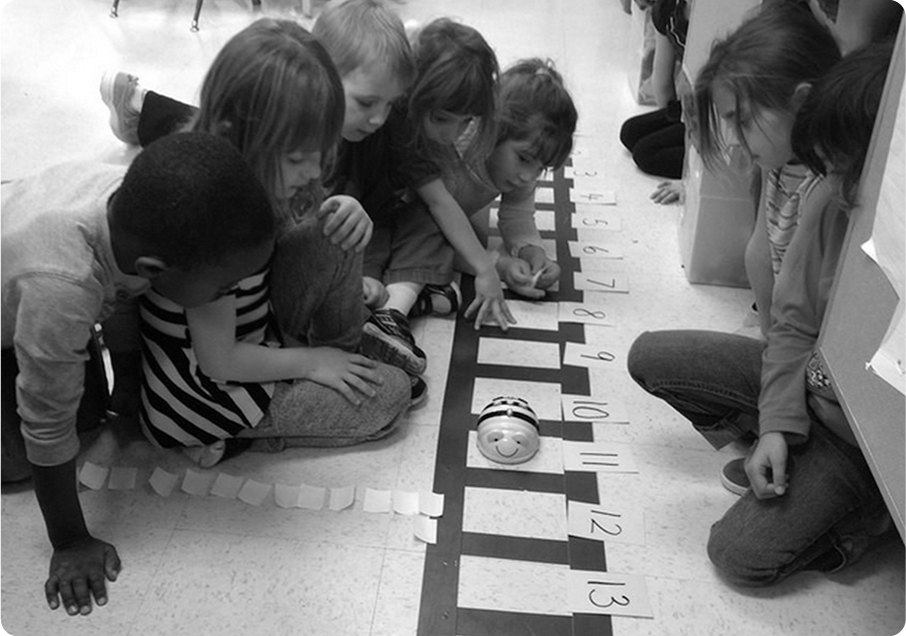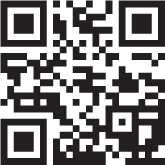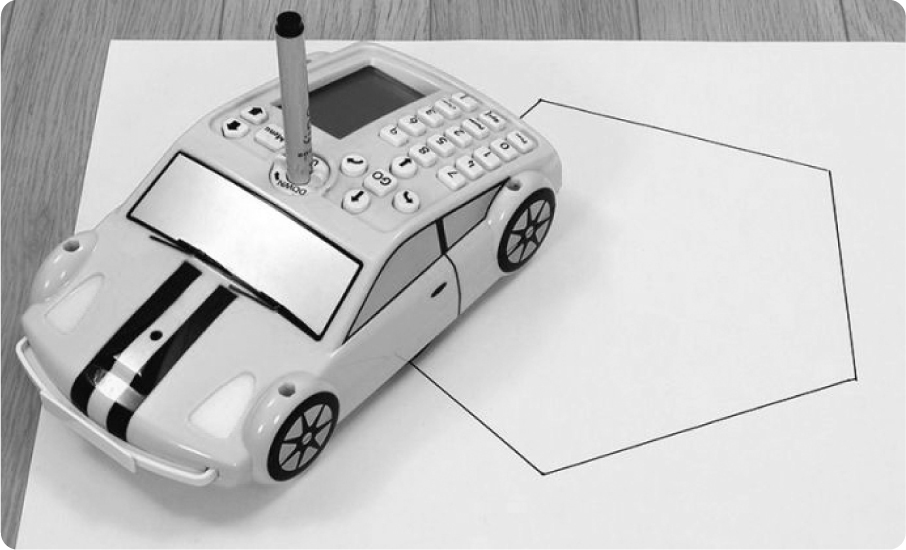CHAPTER
7
Physical Computing Devices: Resources to Help You Get Started
Teachers looking to incorporate physical coding devices can benefit from reading accounts of their use in the classroom. This chapter includes resources from elementary teachers who have implemented coding and computer science learning experiences for all their students. Among these resources will be case studies, links to lesson activities, and grant ideas you may want to explore.
Case Study: Bee-Bots and Basic Math
Kathy Cassidy holds professional development sessions for teachers about using technology in their classrooms, including the use of robots. Kathy also teaches first grade at Westmount School in Moose Jaw, Canada.
Students in Kathy’s classroom recently began to use Bee-Bots as an entry into programming and coding. To learn about how Bee-Bots work and the variety of commands available, they worked in groups to lay out a sequence of actions to get the Bee-Bot to travel to a specific square (see figure 7.1). Kathy said that through this hands-on process, the children could see different groups choosing different routes to get to the same place. She says, “There was lots of trial and error learning, and eventually the students discovered that there were many ways to accomplish the same task.”

Figure 7.1. First-grade students using Bee-Bot for addition and subtraction. Source: Kathy Cassidy.
Kathy became very creative with her use of Bee-Bots in the classroom (see figure 7.1). Below, she describes how the Bee-Bot helped students who were struggling to understand the concept of one and two more and less than a number:
I used floor tape to make a twenty-space, one-column grid and had the students put the numbers from one to twenty in their places on a number line. The students and I then talked about the concepts of more and less with the Bee-Bot. Which way would the Bee-Bot go on the number line if a number was more? Less? The forward and backward arrows on the Bee-Bot were an effective visual representation of this. Before we programmed the Bee-Bot to move, I placed the Bee-Bot somewhere on the number line grid and posed questions such as “Where will the Bee-Bot stop on the number line if the number was two more?” or “What if the Bee-Bot moves to one less than this number? Where will it stop?”
I had the students write their names on a sticky note and predict where the Bee-Bot would be at the end of the program. Once everyone had made their prediction, one of the students programmed the Bee-Bot to move the specific number of spaces, and we watched to see who had made the correct predictions. Students had some difficulty on the first couple of attempts, but soon all the students were able to accurately predict what one or two more or less would be. Success using the Bee-Bot for this practical and fun visual representation!
Kathy documents her students’ progress with Bee-Bots and other classroom activities on her blog (mscassidysclass.edublogs.org).
Alpha-Robotics
Bee-Bots are being piloted with pre-kindergartners, kindergartners, first, and second graders in seven Boston public schools as part of a K–12 Engineering Pathway grant initiated by TechBoston, the district-wide office that oversees technology integration in the schools.
Leading the introduction to Bee-Bots is Judy Robinson Fried, STEM curriculum consultant for Alpha-Robotics (alpha-robotics.com), a resource for elementary teachers using a multi-disciplinary approach to teach engineering concepts using robots. Judy has led both teacher training workshops and in-class presentations on using Bee-Bots in the classroom. She finds that both students and teachers are excited about use of Bee-Bots and quickly learn to program them.
As part of introducing Bee-Bots, Alpha-Robotics has developed customized materials for use in Boston public school classrooms. These include special mats, programming blocks, and image cards. These materials allow use of Bee-Bots in many different areas and channel the motivation Bee-Bots inspire to teach a variety of subjects, from mathematics to language arts.
Students in Boston public schools are ethnically and culturally diverse, and Bee-Bots have proven highly effective for cutting through language and cultural barriers. Judy was especially enthusiastic about her experience with the students and teachers in a K1 and K2 Vietnamese sheltered English class. She reports, “The students have done a spectacular job of programming the Bee-Bot to travel on different paths on any mat. I would say about 80 percent have created complicated programs.”
Community in Schools Grant Idea
Akin Elementary School in Hale Center, Texas, conducted a summer learning program through a “Community in Schools” grant provided by Ace 21st Century. Interested students in grades one through eight filled all the classes through advance registration. Science classes feature introductory robotics using Bee-Bots and Pro-Bots (Bee-Bot’s “older brother”). Course teacher Lester Carr used challenges from his book Problem Solving with Bee-Bot to introduce robotics to younger students.
None of the students had previous experience using Bee-Bots; however, students in grades 1 through 4 were soon able to create simple sequential algorithms to move Bee-Bots to various locations on grid mats. After learning the basics, students worked in pairs (paired programming) to solve challenges at increasingly higher levels of difficulty. Students could be seen demonstrating the computer science practice of perseverance, as educators observed some head scratching and comments like “I didn’t tell it to go there, did I?” or “Why did it go there?” followed by obvious success when high-fives were exchanged.
Students in grades five through eight use Pro-Bot to solve challenging problems which involved calculating various angles and even developing circular paths to navigate various routes on a mat. The development of geometry skills was observed as students watched their Pro-Bots follow algorithms they created (see Figure 7.2). When their bots did not draw the shapes they had expected, students could be seen debugging their algorithms by making corrections to angle measures they previously coded.
This grant and exposure to computer science through physical computing devices helped students to make their geometric thinking visible.

Learn more about Pro-Bot at terrapinlogo.com/probot.html.

Figure 7.2. One of the features of the Pro-Bot is holding a pen to draw while it moves. Source: https://www.terrapinlogo.com/probot.html.